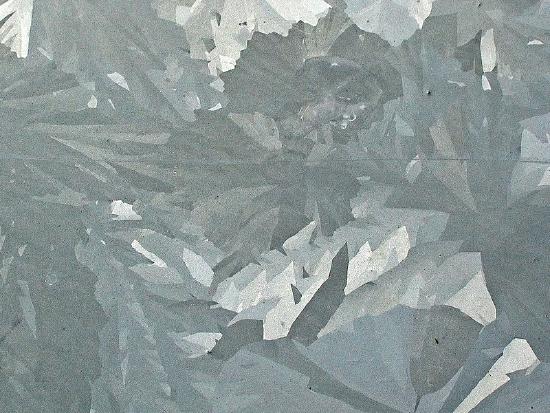Galvanization
- Page ID
- 35763
Galvanization is a metal coating process in which a ferrous part is coated with a thin layer of zinc. The zinc coating seals the surface of the part from the environment, preventing oxidation and weathering from occurring.
The primary method of galvanization is “hot dip galvanization”, which has been in use for over 150 years. While the idea of coating a part in molten zinc was first proposed by chemist Paul Jacques Malouin in 1742, the process was not put into practice until patented by chemist Stanislas Sorel in 1836. Sorel’s process has changed little since then, and still involves coating a part in molten zinc after cleaning it with an acid solution and coating the part in flux.

Crystalline surface of a hot-dip galvanized handrail. (Public Domain;
Benefits of Galvanizing Metal Parts
Galvanization helps to extend the life of steel parts by providing a barrier between the steel and the atmosphere, preventing iron oxide from forming on the surface of the steel. Galvanization also provides superior corrosion resistance to parts exposed to the environment. Galvanization provides a cost-effective solution for coating steel parts, specifically those that will receive significant environmental exposure over their lifetime.
Contributors and Attributions
Binod Shrestha (University of Lorraine)

